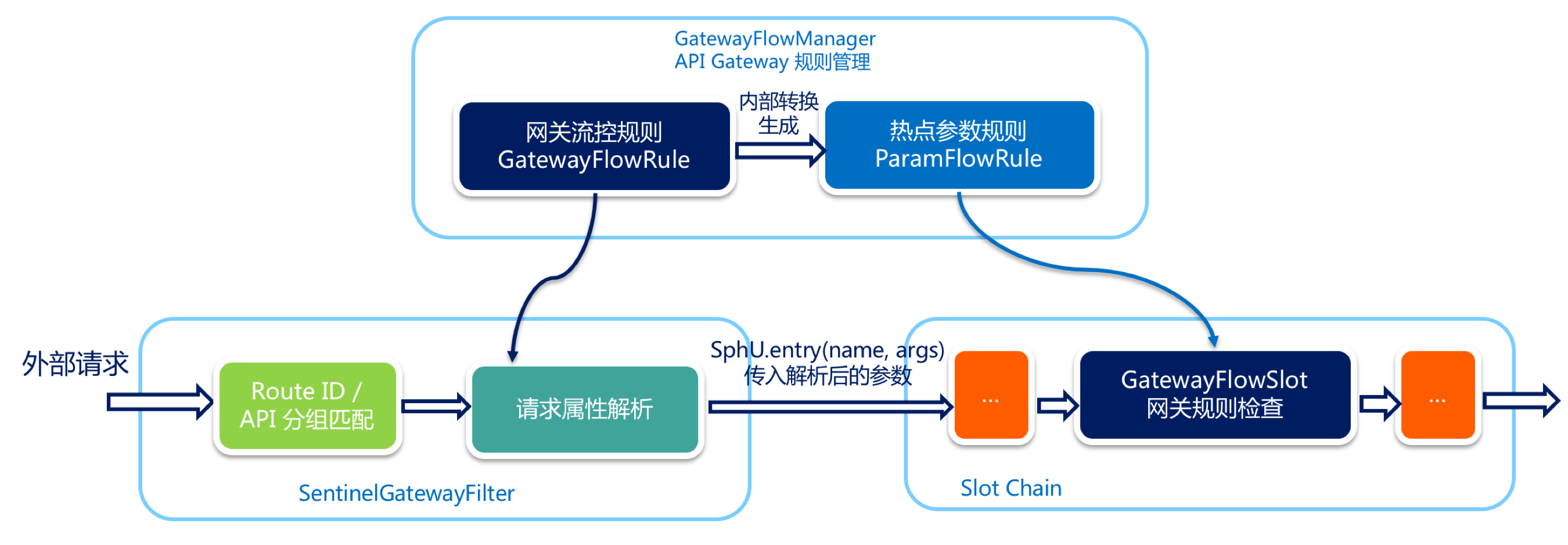一、网关流量控制
Sentinel 支持对 Spring Cloud Gateway、Zuul 等主流的 API Gateway 进行限流。

Sentinel 1.6.0 引入了 Sentinel API Gateway Adapter Common 模块,此模块中包含网关限流的规则和自定义 API 的实体和管理逻辑:
-
GatewayFlowRule:网关限流规则,针对 API Gateway 的场景定制的限流规则,可以针对不同 route 或自定义的 API 分组进行限流,支持针对请求中的参数、Header、来源 IP 等进行定制化的限流。
-
ApiDefinition:用户自定义的 API 定义分组,可以看做是一些 URL 匹配的组合。比如我们可以定义一个 API 叫 my_api,请求 path 模式为 /foo/** 和 /baz/** 的都归到 my_api 这个 API 分组下面。限流的时候可以针对这个自定义的 API 分组维度进行限流。
其中网关限流规则 GatewayFlowRule 的字段解释如下:
-
resource:资源名称,可以是网关中的 route 名称或者用户自定义的 API 分组名称。
-
resourceMode:规则是针对 API Gateway 的 route(RESOURCE_MODE_ROUTE_ID)还是用户在 Sentinel 中定义的 API 分组(RESOURCE_MODE_CUSTOM_API_NAME),默认是 route。
-
grade:限流指标维度,同限流规则的 grade 字段。
-
count:限流阈值
-
intervalSec:统计时间窗口,单位是秒,默认是 1 秒。
-
controlBehavior:流量整形的控制效果,同限流规则的 controlBehavior 字段,目前支持快速失败和匀速排队两种模式,默认是快速失败。
-
burst:应对突发请求时额外允许的请求数目。
-
maxQueueingTimeoutMs:匀速排队模式下的最长排队时间,单位是毫秒,仅在匀速排队模式下生效。
-
paramItem:参数限流配置。若不提供,则代表不针对参数进行限流,该网关规则将会被转换成普通流控规则;否则会转换成热点规则。其中的字段:
1、parseStrategy:从请求中提取参数的策略,目前支持提取来源 IP(PARAM_PARSE_STRATEGY_CLIENT_IP)、Host(PARAM_PARSE_STRATEGY_HOST)、任意 Header(PARAM_PARSE_STRATEGY_HEADER)和任意 URL 参数
(PARAM_PARSE_STRATEGY_URL_PARAM)四种模式。2、fieldName:若提取策略选择 Header 模式或 URL 参数模式,则需要指定对应的 header 名称或 URL 参数名称。
3、pattern:参数值的匹配模式,只有匹配该模式的请求属性值会纳入统计和流控;若为空则统计该请求属性的所有值。(1.6.2 版本开始支持)
4、matchStrategy:参数值的匹配策略,目前支持精确匹配(PARAM_MATCH_STRATEGY_EXACT)、子串匹配(PARAM_MATCH_STRATEGY_CONTAINS)和正则匹配(PARAM_MATCH_STRATEGY_REGEX)。(1.6.2 版本开始支持)
用户可以通过 GatewayRuleManager.loadRules(rules) 手动加载网关规则,或通过 GatewayRuleManager.register2Property(property) 注册动态规则源动态推送(推荐方式)。
二、手动加载网关规则
新建gateway-service的模块,修改pom.xml继承父项目:
<parent>
<groupId>com.example</groupId>
<artifactId>SpringCloudAlibabaDemo</artifactId>
<version>0.0.1-SNAPSHOT</version>
</parent>
并添加依赖:
<dependency>
<groupId>com.alibaba.cloud</groupId>
<artifactId>spring-cloud-starter-alibaba-sentinel</artifactId>
</dependency>
<dependency>
<groupId>com.alibaba.cloud</groupId>
<artifactId>spring-cloud-starter-alibaba-nacos-discovery</artifactId>
</dependency>
<dependency>
<groupId>com.alibaba.cloud</groupId>
<artifactId>spring-cloud-alibaba-sentinel-gateway</artifactId>
</dependency>
<dependency>
<groupId>org.springframework.cloud</groupId>
<artifactId>spring-cloud-starter-gateway</artifactId>
<version>3.1.7</version>
</dependency>
<dependency>
<groupId>com.alibaba.csp</groupId>
<artifactId>sentinel-spring-cloud-gateway-adapter</artifactId>
</dependency>
<dependency>
<groupId>org.springframework.cloud</groupId>
<artifactId>spring-cloud-starter-loadbalancer</artifactId>
<version>3.1.2</version>
</dependency>
配置application.yml:
server:
port: 8090
spring:
application:
name: spring-cloud-gateway
cloud:
gateway:
enabled: true
routes:
# Add your routes here.
- id: product_route
uri: lb://producer
predicates:
- Path=/producer/**
filters:
- StripPrefix=1
nacos:
discovery:
server-addr: localhost:8848
sentinel:
transport:
dashboard: localhost:9000
producer模块的controller:
@RestController
public class HelloProducer {
@Value("${server.port}")
private int port;
@RequestMapping("/hello")
public String hello() {
return "hello,Producer,port:" + port;
}
}
如果要手动加载网关,参考:
@Configuration
public class GatewayConfiguration {
private final List<ViewResolver> viewResolvers;
private final ServerCodecConfigurer serverCodecConfigurer;
public GatewayConfiguration(ObjectProvider<List<ViewResolver>> viewResolversProvider,
ServerCodecConfigurer serverCodecConfigurer) {
this.viewResolvers = viewResolversProvider.getIfAvailable(Collections::emptyList);
this.serverCodecConfigurer = serverCodecConfigurer;
}
@Bean
@Order(Ordered.HIGHEST_PRECEDENCE)
public SentinelGatewayBlockExceptionHandler sentinelGatewayBlockExceptionHandler() {
// Register the block exception handler for Spring Cloud Gateway.
return new SentinelGatewayBlockExceptionHandler(viewResolvers, serverCodecConfigurer);
}
@Bean
@Order(-1)
public GlobalFilter sentinelGatewayFilter() {
return new SentinelGatewayFilter();
}
@PostConstruct
public void doInit() {
initCustomizedApis();
initGatewayRules();
}
private void initCustomizedApis() {
Set<ApiDefinition> definitions = new HashSet<>();
ApiDefinition api1 = new ApiDefinition("some_customized_api")
.setPredicateItems(new HashSet<ApiPredicateItem>() {{
add(new ApiPathPredicateItem().setPattern("/ahas"));
add(new ApiPathPredicateItem().setPattern("/product/**")
.setMatchStrategy(SentinelGatewayConstants.URL_MATCH_STRATEGY_PREFIX));
}});
ApiDefinition api2 = new ApiDefinition("another_customized_api")
.setPredicateItems(new HashSet<ApiPredicateItem>() {{
add(new ApiPathPredicateItem().setPattern("/**")
.setMatchStrategy(SentinelGatewayConstants.URL_MATCH_STRATEGY_PREFIX));
}});
definitions.add(api1);
definitions.add(api2);
GatewayApiDefinitionManager.loadApiDefinitions(definitions);
}
private void initGatewayRules() {
Set<GatewayFlowRule> rules = new HashSet<>();
rules.add(new GatewayFlowRule("aliyun_route")
.setCount(10)
.setIntervalSec(1)
);
rules.add(new GatewayFlowRule("aliyun_route")
.setCount(2)
.setIntervalSec(2)
.setBurst(2)
.setParamItem(new GatewayParamFlowItem()
.setParseStrategy(SentinelGatewayConstants.PARAM_PARSE_STRATEGY_CLIENT_IP)
)
);
rules.add(new GatewayFlowRule("httpbin_route")
.setCount(10)
.setIntervalSec(1)
.setControlBehavior(RuleConstant.CONTROL_BEHAVIOR_RATE_LIMITER)
.setMaxQueueingTimeoutMs(600)
.setParamItem(new GatewayParamFlowItem()
.setParseStrategy(SentinelGatewayConstants.PARAM_PARSE_STRATEGY_HEADER)
.setFieldName("X-Sentinel-Flag")
)
);
rules.add(new GatewayFlowRule("httpbin_route")
.setCount(1)
.setIntervalSec(1)
.setParamItem(new GatewayParamFlowItem()
.setParseStrategy(SentinelGatewayConstants.PARAM_PARSE_STRATEGY_URL_PARAM)
.setFieldName("pa")
)
);
rules.add(new GatewayFlowRule("httpbin_route")
.setCount(2)
.setIntervalSec(30)
.setParamItem(new GatewayParamFlowItem()
.setParseStrategy(SentinelGatewayConstants.PARAM_PARSE_STRATEGY_URL_PARAM)
.setFieldName("type")
.setPattern("warn")
.setMatchStrategy(SentinelGatewayConstants.PARAM_MATCH_STRATEGY_CONTAINS)
)
);
rules.add(new GatewayFlowRule("some_customized_api")
.setResourceMode(SentinelGatewayConstants.RESOURCE_MODE_CUSTOM_API_NAME)
.setCount(5)
.setIntervalSec(1)
.setParamItem(new GatewayParamFlowItem()
.setParseStrategy(SentinelGatewayConstants.PARAM_PARSE_STRATEGY_URL_PARAM)
.setFieldName("pn")
)
);
GatewayRuleManager.loadRules(rules);
}
}
三、使用网关流控控制台
接下来看看实时配置网关流控规则。注释掉上面的手动加载网关配置,重启后访问http://localhost:8090/producer/hello,打开Sentinel dashboard:
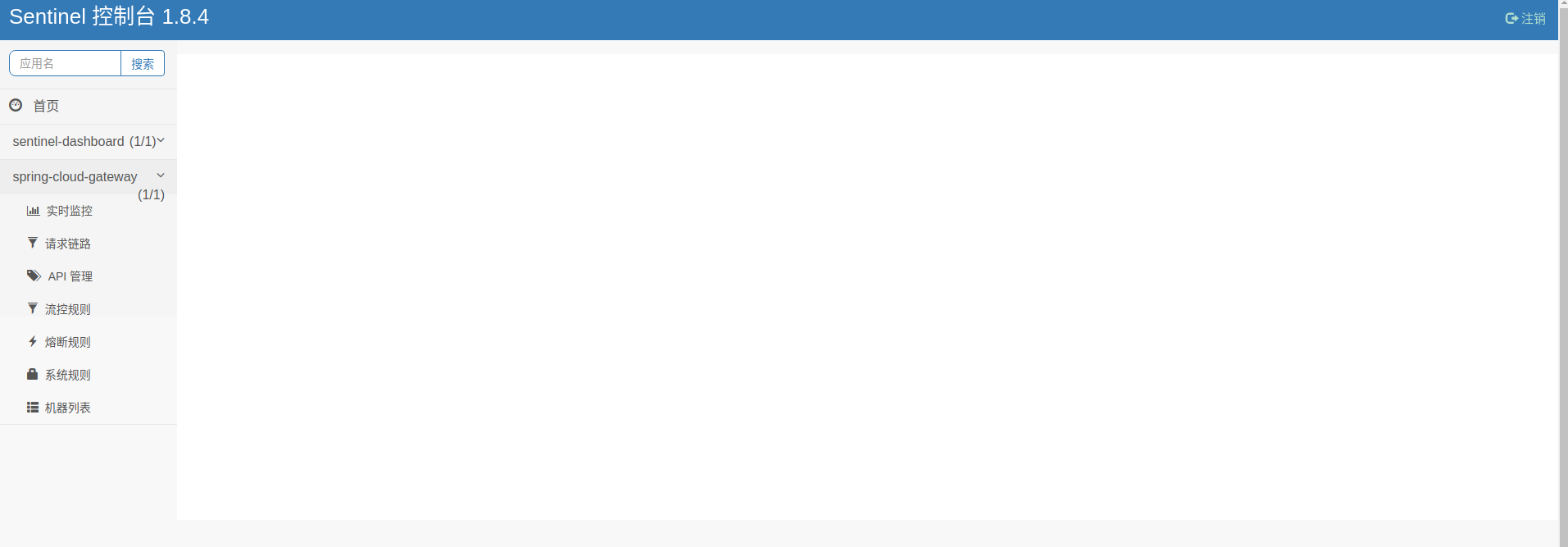
发现热点规则,授权规则菜单都没了,多了个API管理。打开请求链路:
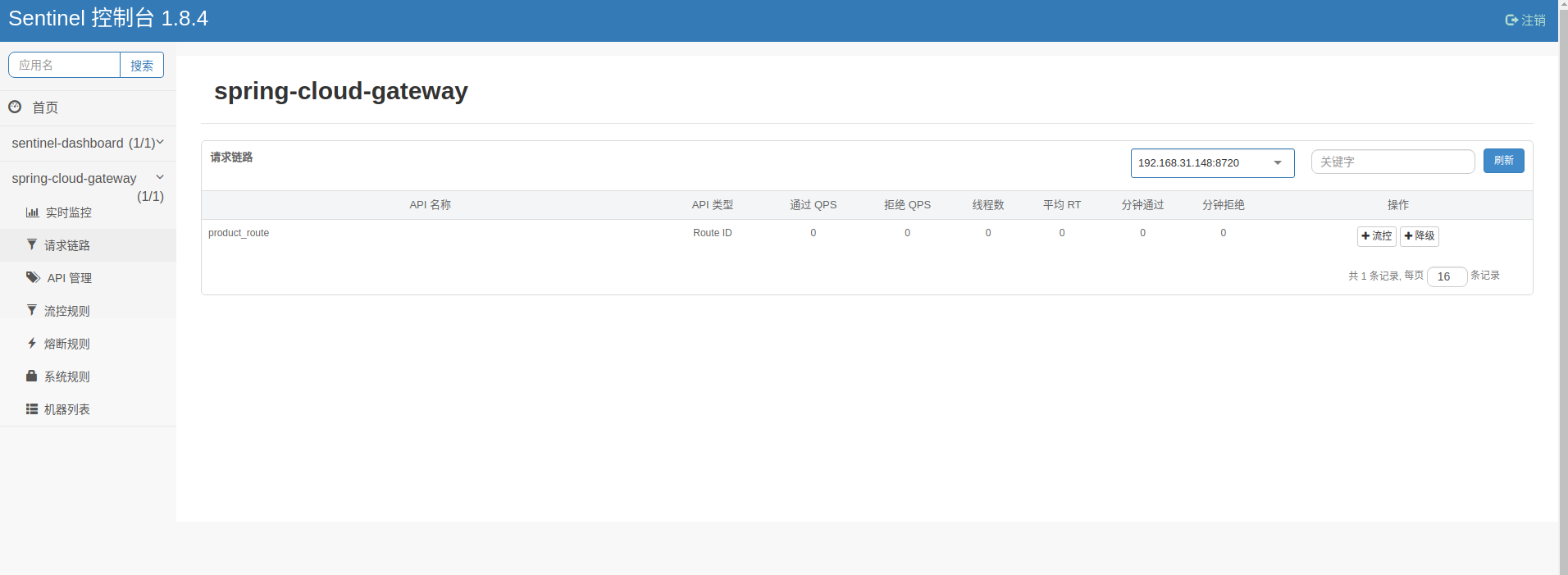
请求链路右边的操作只有流控和降级。看到API 类型是Route ID,表示使用路由规则。前面的API 名称表示路由ID。
spring:
application:
name: spring-cloud-gateway
cloud:
gateway:
enabled: true
routes:
# Add your routes here.
- id: product_route
uri: lb://producer
predicates:
- Path=/producer/*
filters:
- StripPrefix=1
和配置中的id相同。
降级规则和之前的相同,不再赘述。点击右边的流控:
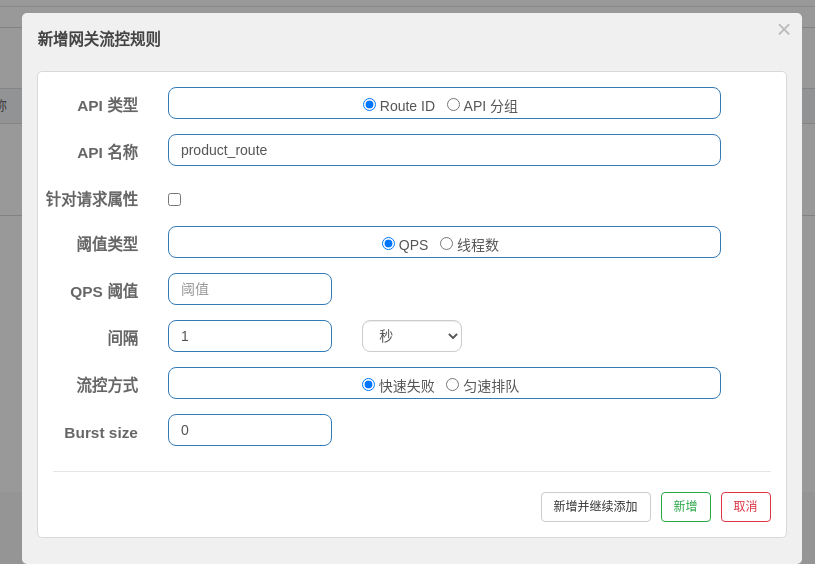
当API类型是Route ID ,API名称是路由规则ID。间隔表示限流时长。流控方式只有快速失败和匀速排队 。Burst size表示应对突发请求时额外允许的请求数目。所以选择QPS限流时最大请求数等于QPS阈值+Burst size。
配置限流规则:

点击新增添加限流规则。
用jmeter配置访问http://localhost:8090/producer/hello,配置QPS为10:

执行后看到:
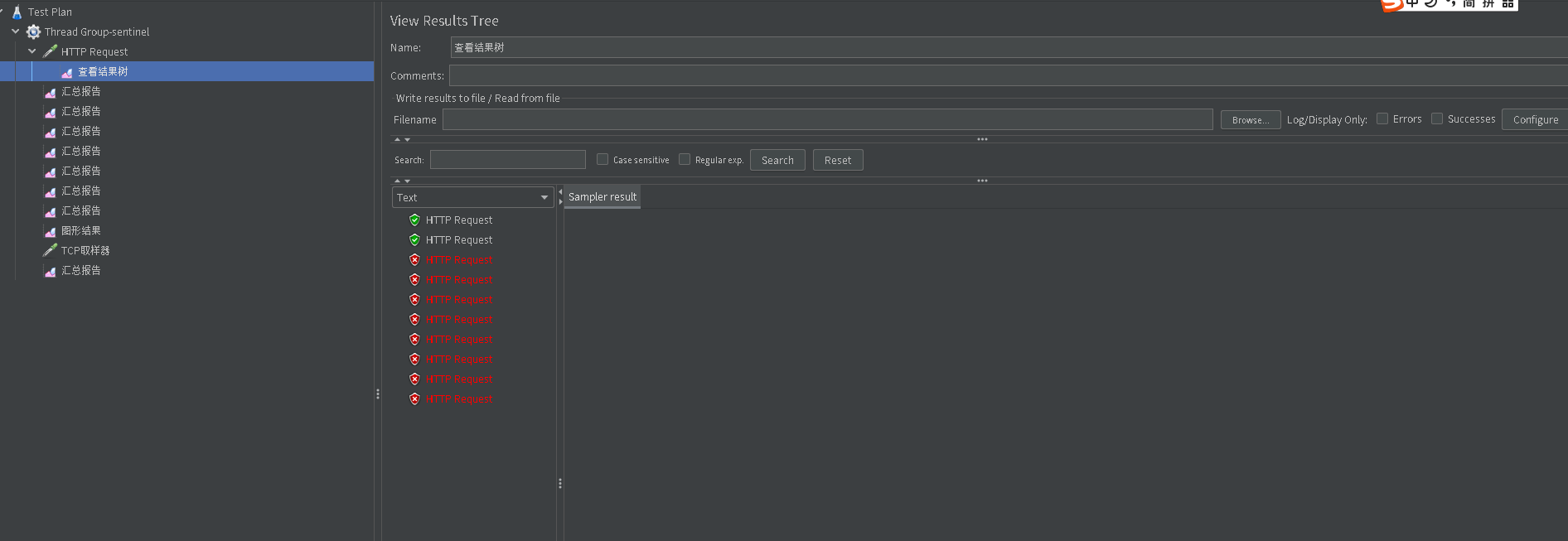
只有两个请求通过。用浏览器访问http://localhost:8090/producer/hello,发现:

还在限流中。
修改流控规则,增加Burst size:
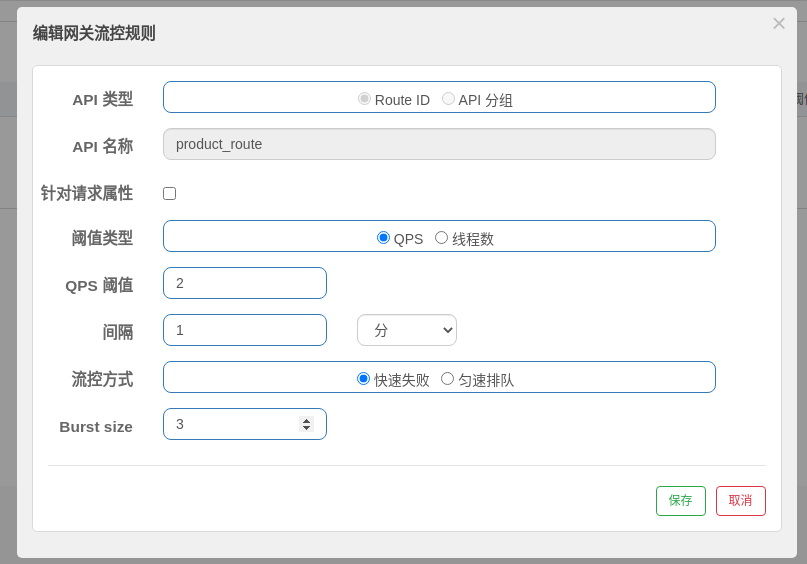
用jmeter测试:
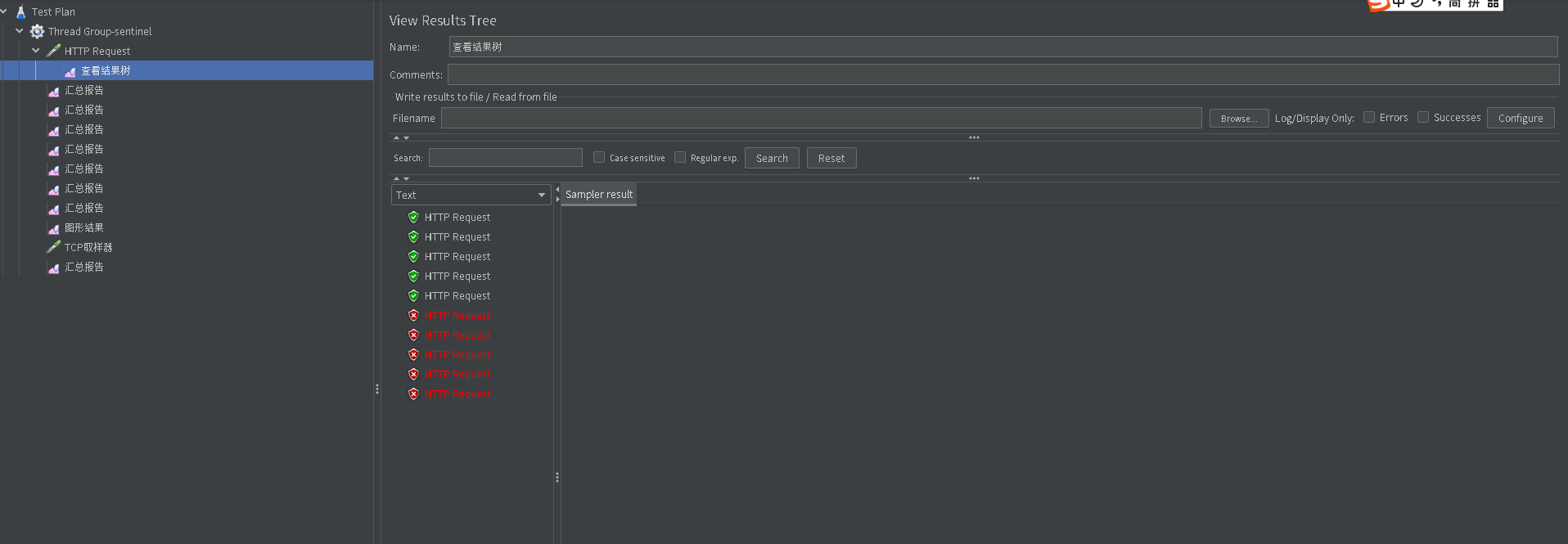
发现有5个请求通过。
接下来演示API 分组,删除之前的流控规则,在API 管理菜单中添加API分组:
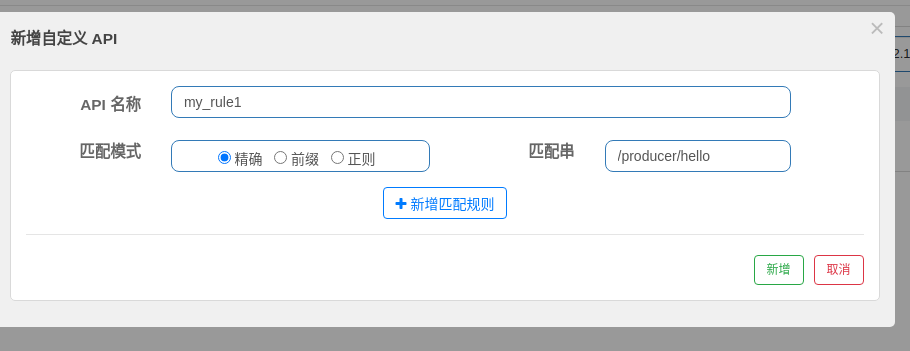
添加流控规则:
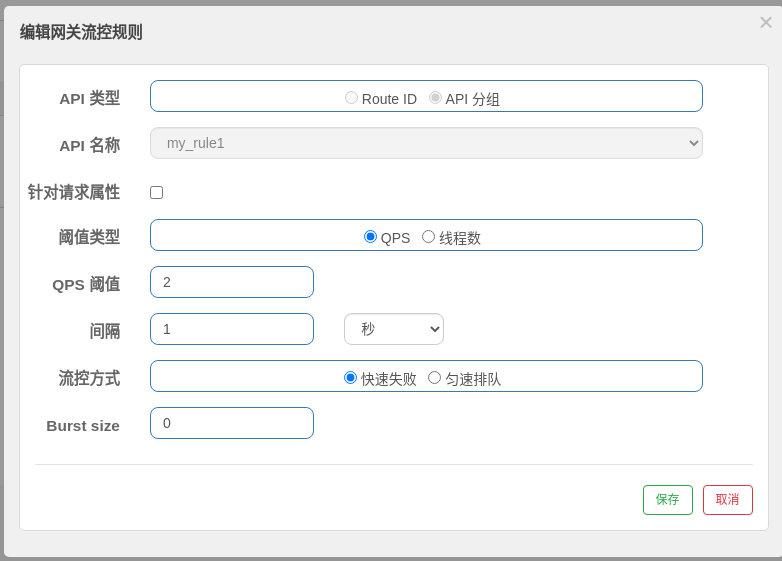
点击新增后,用jmeter测试:
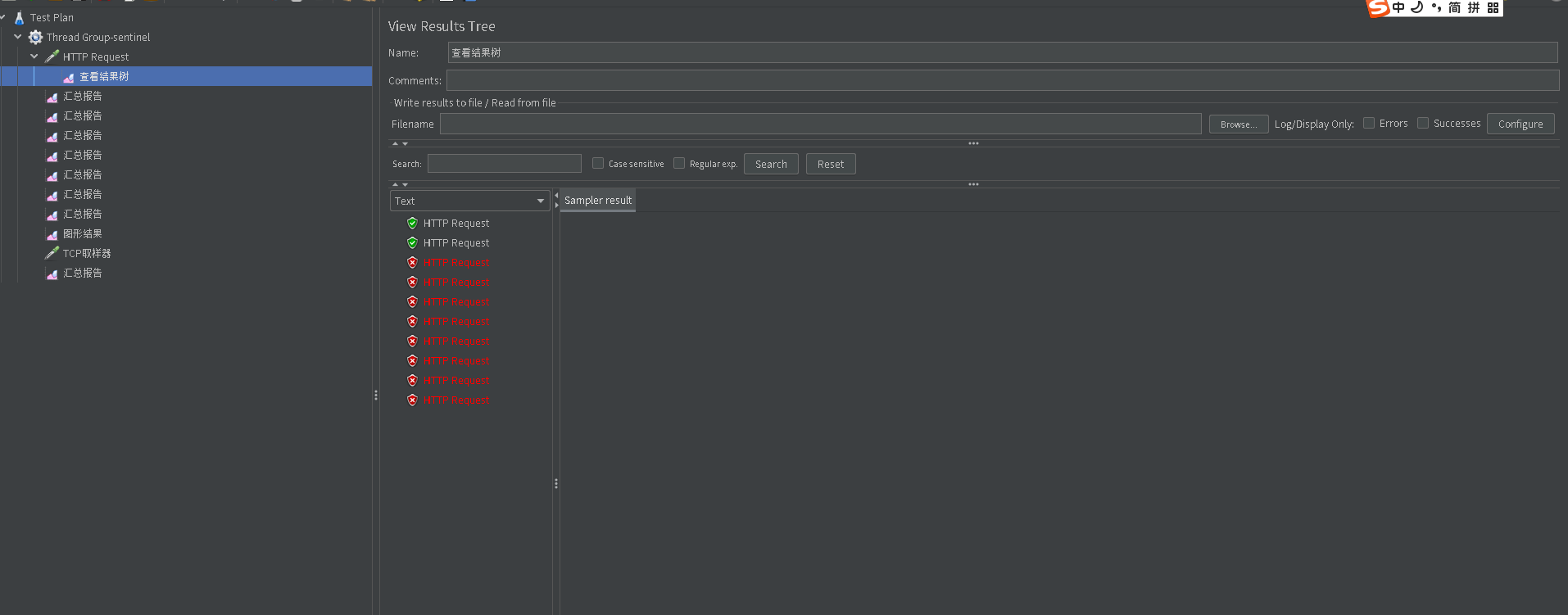
发现有两个请求通过。
修改API分组为:
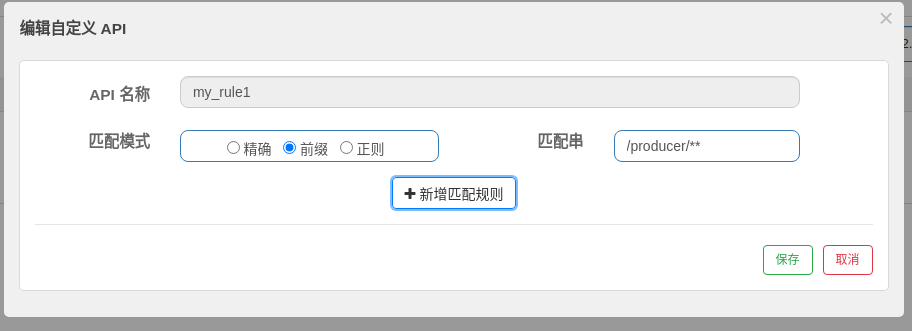
用jmeter测试:
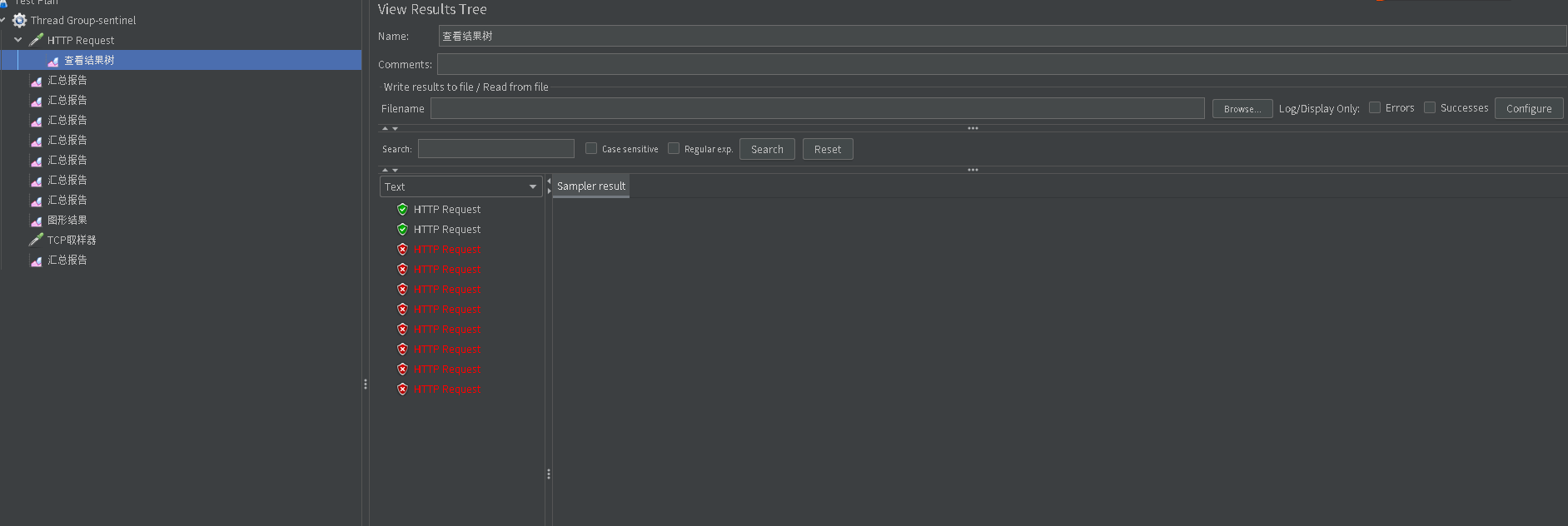
还是只有两个请求通过。
修改Producer的Controller:
@RestController
public class HelloProducer {
@Value("${server.port}")
private int port;
@RequestMapping("/hello")
public String hello() {
return "hello,Producer,port:" + port;
}
@RequestMapping("/path/{attr}")
public String path(@PathVariable(value = "attr") String attr) {
return "hello,Producer:" + attr;
}
}
重启Producer后修改API分组为:
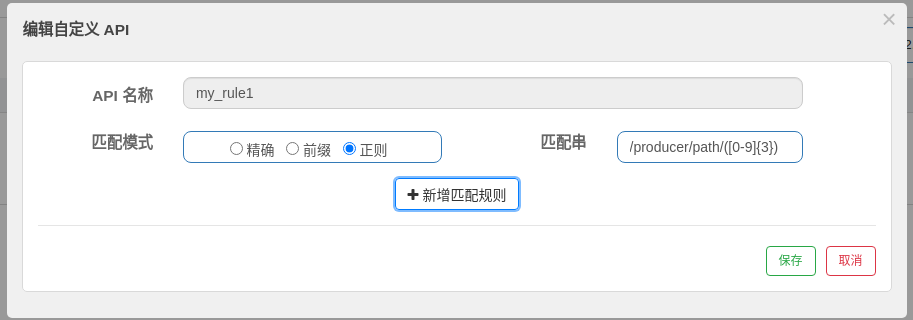
修改jmeter的访问路径为http://localhost:8090/producer/path/a,执行jmeter:

10个请求都通过了。
修改jmeter的访问路径为http://localhost:8090/producer/path/123,执行jmeter:
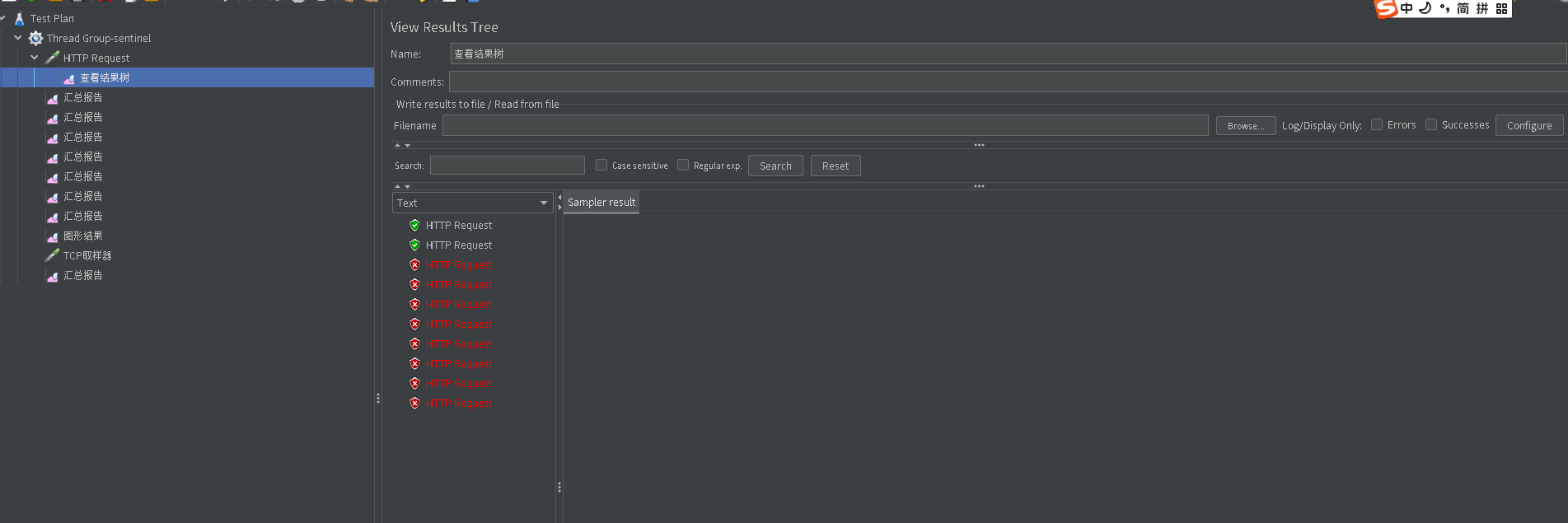
只有两个请求通过。
四、网关流控实现原理
当通过 GatewayRuleManager 加载网关流控规则(GatewayFlowRule)时,无论是否针对请求属性进行限流,Sentinel 底层都会将网关流控规则转化为热点参数规则(ParamFlowRule),存储在 GatewayRuleManager 中,与正常的热点参数规则相隔离。转换时 Sentinel 会根据请求属性配置,为网关流控规则设置参数索引(idx),并同步到生成的热点参数规则中。
外部请求进入 API Gateway 时会经过 Sentinel 实现的 filter,其中会依次进行 路由/API 分组匹配、请求属性解析和参数组装。Sentinel 会根据配置的网关流控规则来解析请求属性,并依照参数索引顺序组装参数数组,最终传入 SphU.entry(res, args) 中。Sentinel API Gateway Adapter Common 模块向 Slot Chain 中添加了一个 GatewayFlowSlot,专门用来做网关规则的检查。GatewayFlowSlot 会从 GatewayRuleManager 中提取生成的热点参数规则,根据传入的参数依次进行规则检查。若某条规则不针对请求属性,则会在参数最后一个位置置入预设的常量,达到普通流控的效果。
